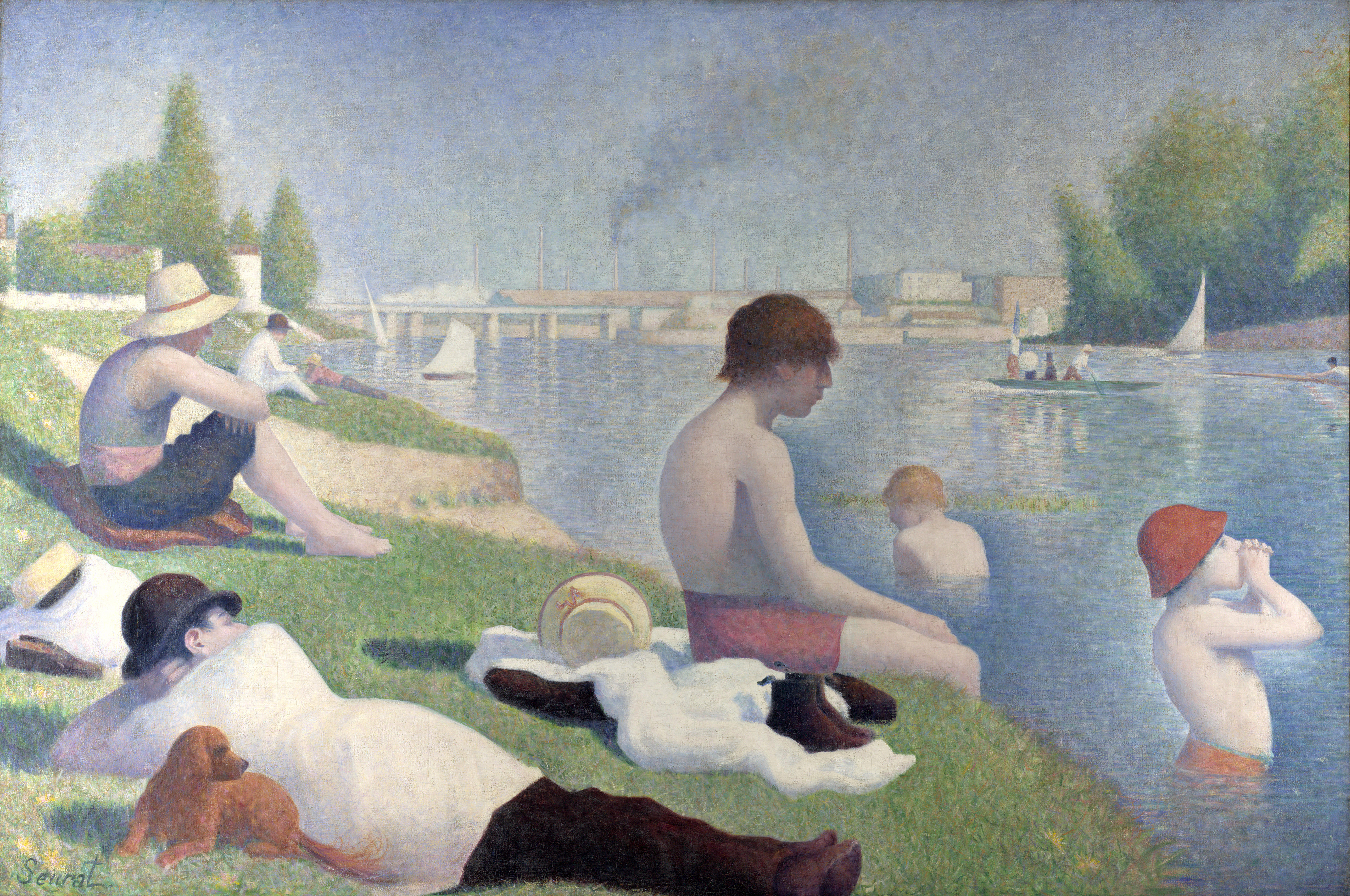|
The Circus (Seurat)
''The Circus'' (French: ''Le Cirque'') is an oil on canvas painting by Georges Seurat. It was his last painting, made in a Neo-Impressionist style in 1890–91, and remained unfinished at his death in March 1891. The painting is located at the Musée d'Orsay in Paris. Background The painting was Seurat's third major work treating the theme of the circus, after his '' Parade (Circus sideshow)'' of 1887-88 and ''Le Chahut'' of 1889–90. It depicts a female performer standing on a horse at the Circus Fernando (renamed the Circus Médrano in 1890, after its most famous clown). The Circus Médrano was located at the corner of the Rue des Martyrs and the Boulevard de Rochechouart, close to Seurat's studio. It was a popular entertainment in Paris, depicted in the 1880s by other artists such as Renoir (for example, '' Acrobats at the Cirque Fernando (Francisca and Angelina Wartenberg)''), Degas (for example, ''Miss La La at the Cirque Fernando'') and Toulouse-Lautrec (for example ... [...More Info...] [...Related Items...] OR: [Wikipedia] [Google] [Baidu] |
Georges Seurat
Georges Pierre Seurat ( , , ; 2 December 1859 – 29 March 1891) was a French post-Impressionist artist. He devised the painting techniques known as chromoluminarism and pointillism and used conté crayon for drawings on paper with a rough surface. Seurat's artistic personality combined qualities that are usually thought of as opposed and incompatible: on the one hand, his extreme and delicate sensibility, on the other, a passion for logical abstraction and an almost mathematical precision of mind. His large-scale work ''A Sunday Afternoon on the Island of La Grande Jatte'' (1884–1886) altered the direction of modern art by initiating Neo-Impressionism, and is one of the icons of late 19th-century painting. Biography Family and education Seurat was born on 2 December 1859 in Paris, at 60 rue de Bondy (now rue René Boulanger). The Seurat family moved to 136 boulevard de Magenta (now 110 boulevard de Magenta) in 1862 or 1863.Seurat: p. 16 His father, Antoine Chrysostome ... [...More Info...] [...Related Items...] OR: [Wikipedia] [Google] [Baidu] |
Boulevard De Magenta
The boulevard de Magenta is located in the Ninth and Tenth arrondissements of Paris, France. It begins at place de la République and 1, rue Beaurepaire, and ends at 1, boulevard de Rochechouart and 53, boulevard de la Chapelle. Etymology It is named after the battle of Magenta, a battle fought on 4 June 1859 near Magenta in Italy. It was a victory by the Piedmontais of the kingdom of Piedmont-Sardinia and by the French armée d'Italie under general Patrice de MacMahon and Napoléon III over the Austrians under Guylay. History The creation of the boulevard de Magenta was part of the Hausmannian transformation of Paris. It was completed in 1855 between rue du Faubourg-Saint-Martin and the boulevard de Rochechouart (the boulevard here in fact follows the route of the old rue du Nord which formed a part of an 1827 subdivision) and in 1859 between place de la République and rue du Faubourg-Saint-Martin. Stations Métro * République * Jacques-Bonsergent * Barbès ... [...More Info...] [...Related Items...] OR: [Wikipedia] [Google] [Baidu] |
Cubism
Cubism is an early-20th-century avant-garde art movement that revolutionized European painting and sculpture, and inspired related movements in music, literature and architecture. In Cubist artwork, objects are analyzed, broken up and reassembled in an abstracted form—instead of depicting objects from a single viewpoint, the artist depicts the subject from a multitude of viewpoints to represent the subject in a greater context. Cubism has been considered the most influential art movement of the 20th century. The term is broadly used in association with a wide variety of art produced in Paris (Montmartre and Montparnasse) or near Paris ( Puteaux) during the 1910s and throughout the 1920s. The movement was pioneered by Pablo Picasso and Georges Braque, and joined by Jean Metzinger, Albert Gleizes, Robert Delaunay, Henri Le Fauconnier, Juan Gris, and Fernand Léger. One primary influence that led to Cubism was the representation of three-dimensional form in the late works of Pau ... [...More Info...] [...Related Items...] OR: [Wikipedia] [Google] [Baidu] |


